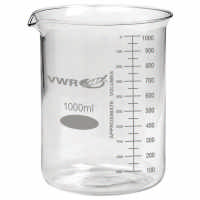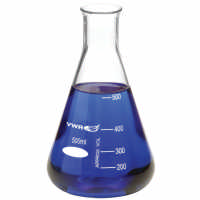Glassware: Choose and Use Guide There are several different types of laboratory glassware available for use depending on your requirements:
Borosilicate glass is widely used because of its chemical resistance, biomedical compatibility and its ability to withstand temperature changes (thermal shock stability) in various laboratory applications. It has exceptional resistance to thermal shock because it has a low coefficient of expansion and a high softening point.
- Class A glassware has the tightest tolerance on reading the meniscus (higher level of accuracy)
- Class B or Student Glassware has double the tolerance of Class A (less accuracy for reading the meniscus).
Flint Glass is a soda lime glass, perfect for general applications where chemical durability and heat or shock resistance are not of primary concern. Care and Maintenance
Good technique in the laboratory relies upon having clean glassware to prevent experimental error. Glassware should be cleaned immediately after use to assure residue does not become impossible to remove. If items can not be addressed directly after use they should soak in water to prevent residue collection. To properly clean glassware, use a soap, detergent, or cleaning powder mixed with hot water to cleanse the item. Thoroughly scrub your glassware with a brush making sure to cover all surfaces. Rinse with tap water inside and out allowing the water to sit and collect excess detergent and dirt. It is imperative that your glassware does not retain any soap or detergent residue. Finally, rinse glassware with distilled water and allow time to dry. Always avoid using scratched, chipped, or cracked glassware in the laboratory. In these instances, glassware is more likely to break, especially when changes in temperature are involved.
  
|
